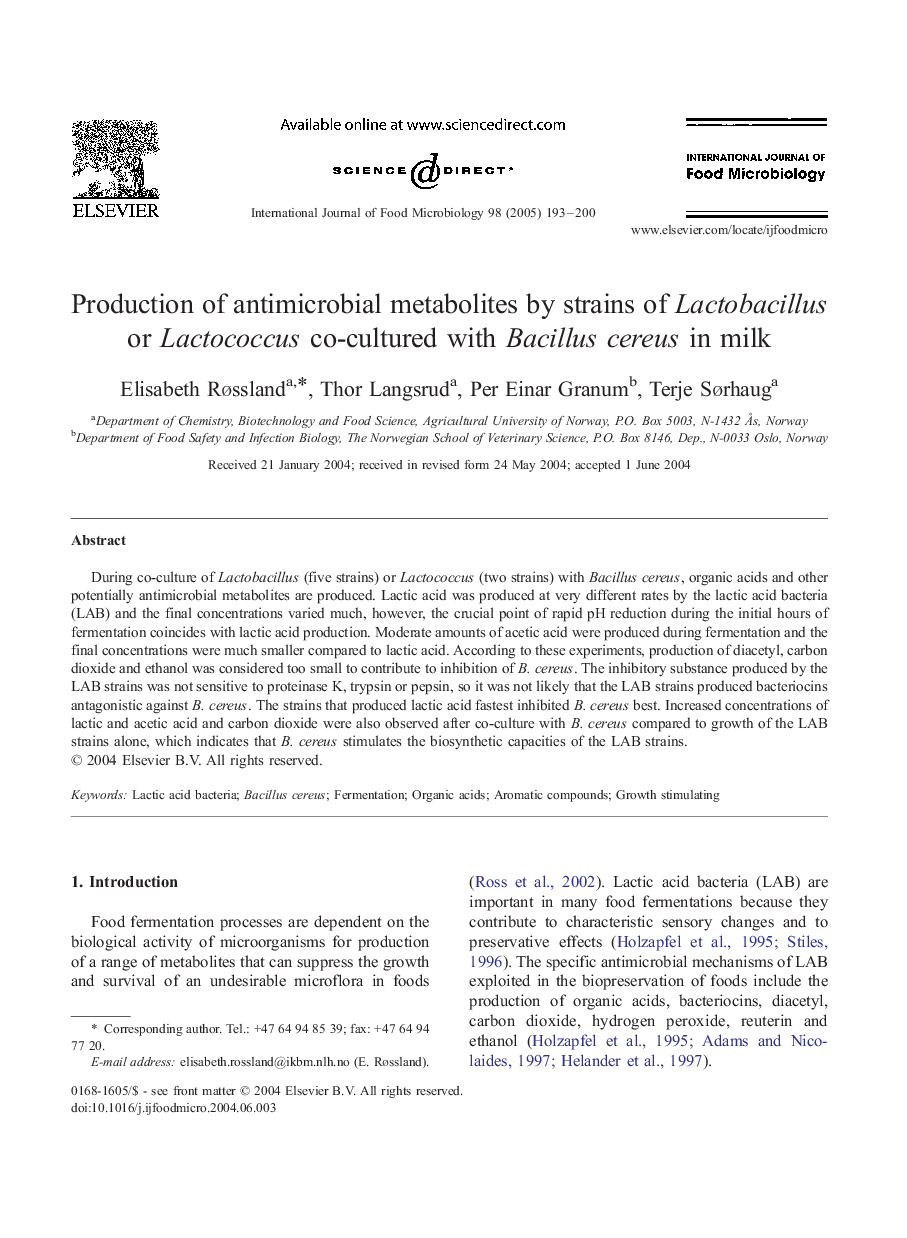| Article ID | Journal | Published Year | Pages | File Type |
|---|---|---|---|---|
| 10107690 | International Journal of Food Microbiology | 2005 | 8 Pages |
Abstract
During co-culture of Lactobacillus (five strains) or Lactococcus (two strains) with Bacillus cereus, organic acids and other potentially antimicrobial metabolites are produced. Lactic acid was produced at very different rates by the lactic acid bacteria (LAB) and the final concentrations varied much, however, the crucial point of rapid pH reduction during the initial hours of fermentation coincides with lactic acid production. Moderate amounts of acetic acid were produced during fermentation and the final concentrations were much smaller compared to lactic acid. According to these experiments, production of diacetyl, carbon dioxide and ethanol was considered too small to contribute to inhibition of B. cereus. The inhibitory substance produced by the LAB strains was not sensitive to proteinase K, trypsin or pepsin, so it was not likely that the LAB strains produced bacteriocins antagonistic against B. cereus. The strains that produced lactic acid fastest inhibited B. cereus best. Increased concentrations of lactic and acetic acid and carbon dioxide were also observed after co-culture with B. cereus compared to growth of the LAB strains alone, which indicates that B. cereus stimulates the biosynthetic capacities of the LAB strains.
Related Topics
Life Sciences
Agricultural and Biological Sciences
Food Science
Authors
Elisabeth Røssland, Thor Langsrud, Per Einar Granum, Terje Sørhaug,
